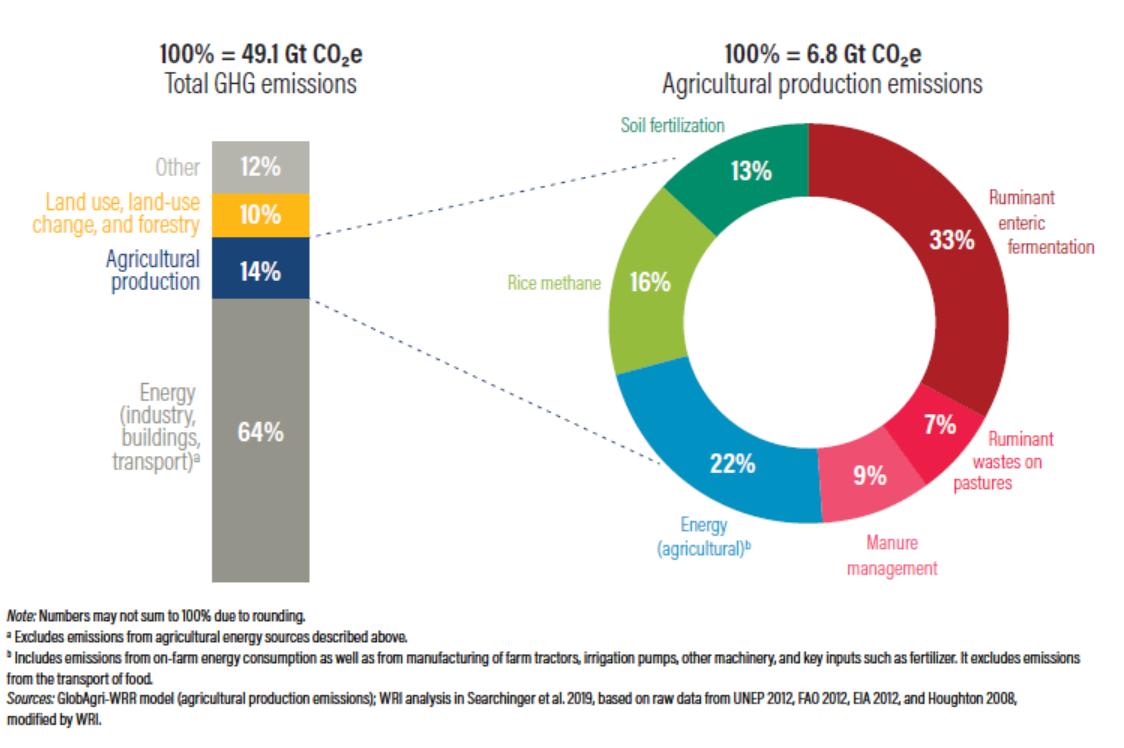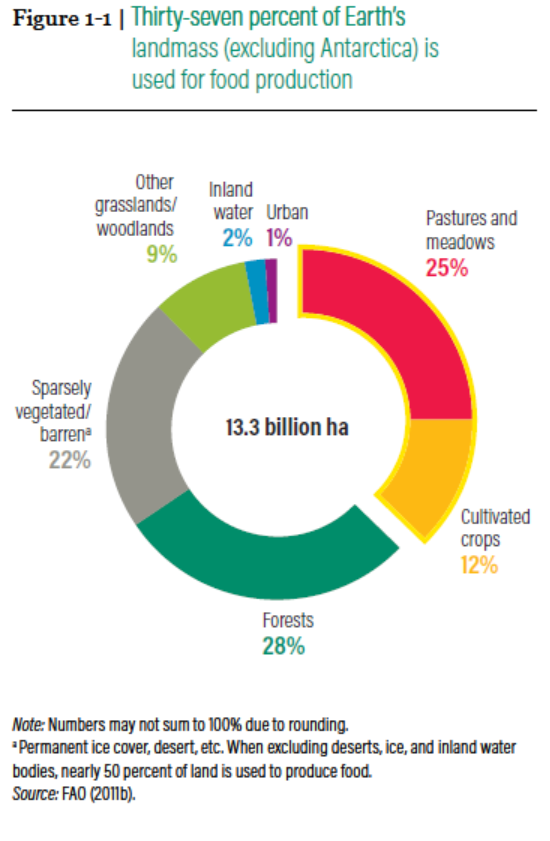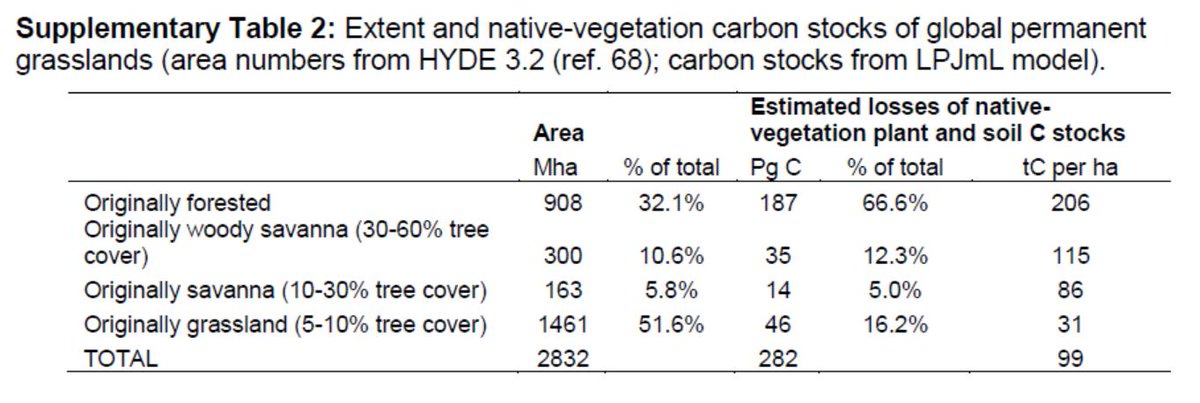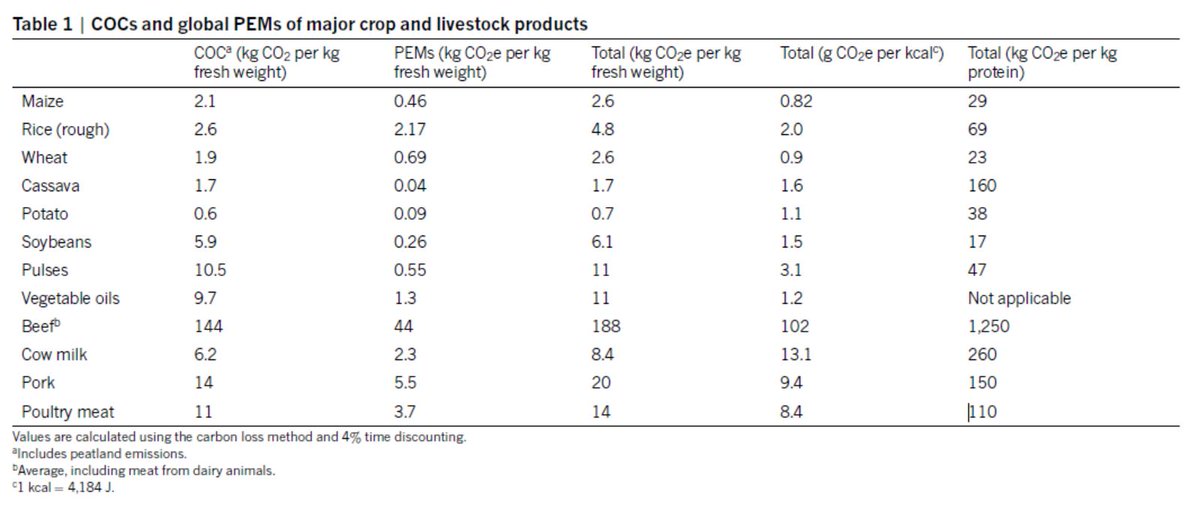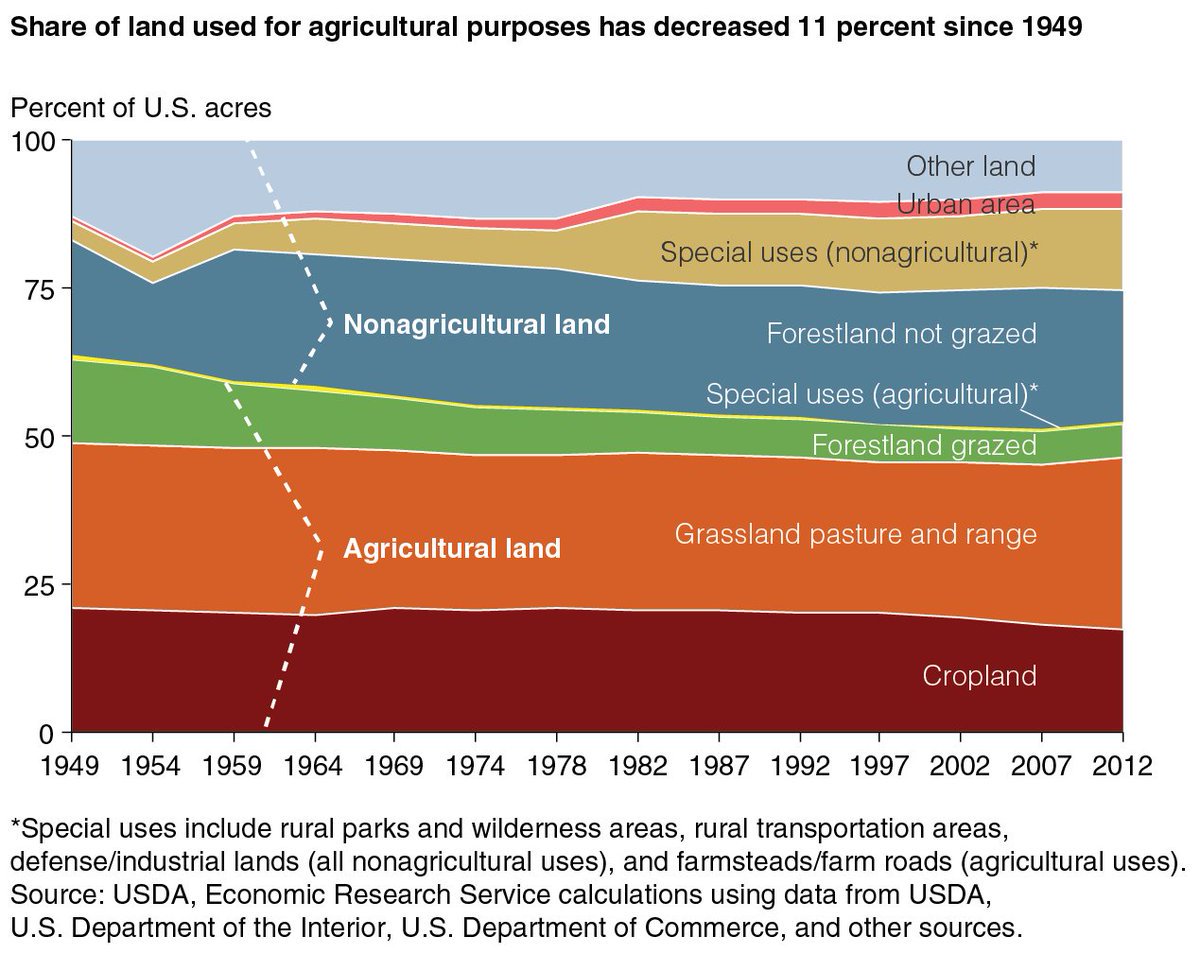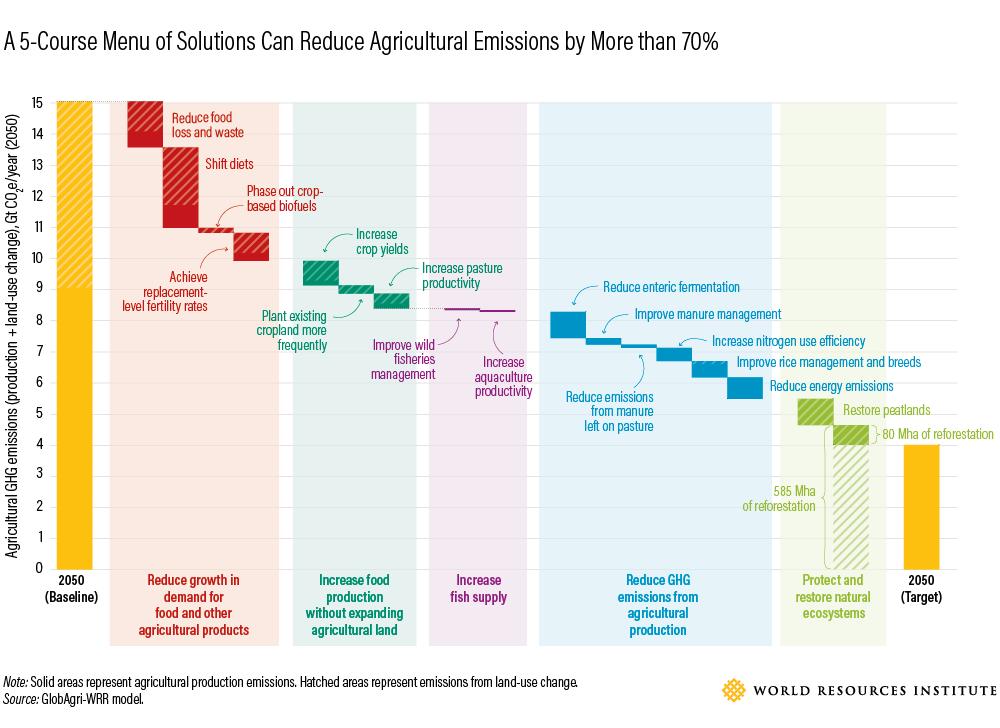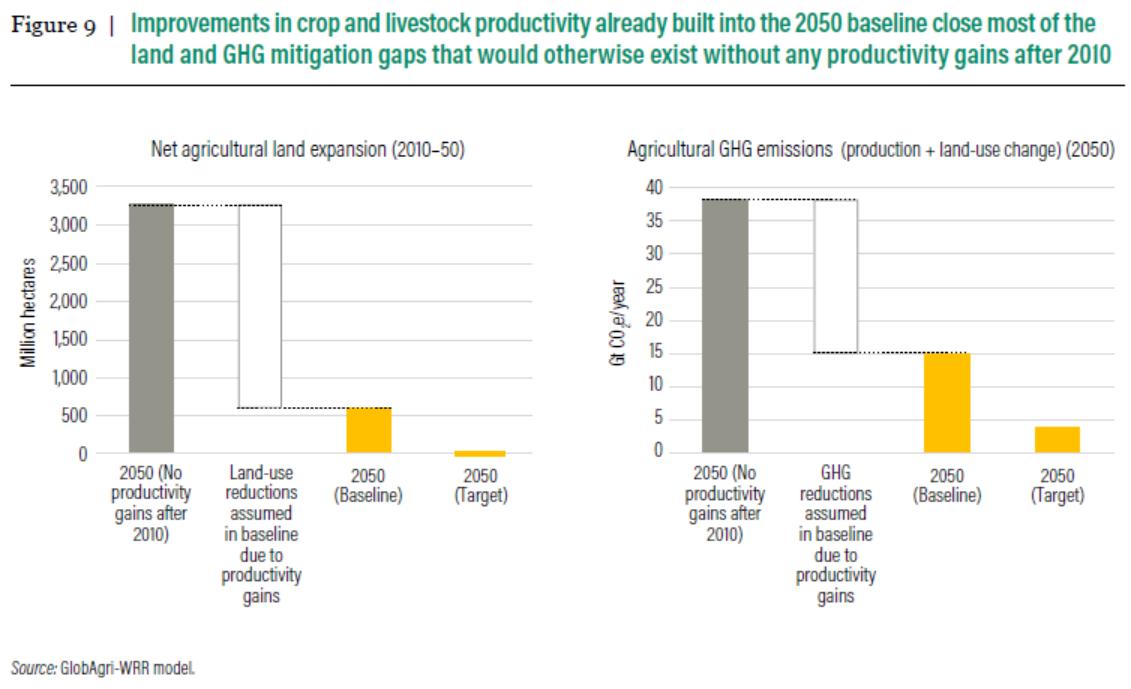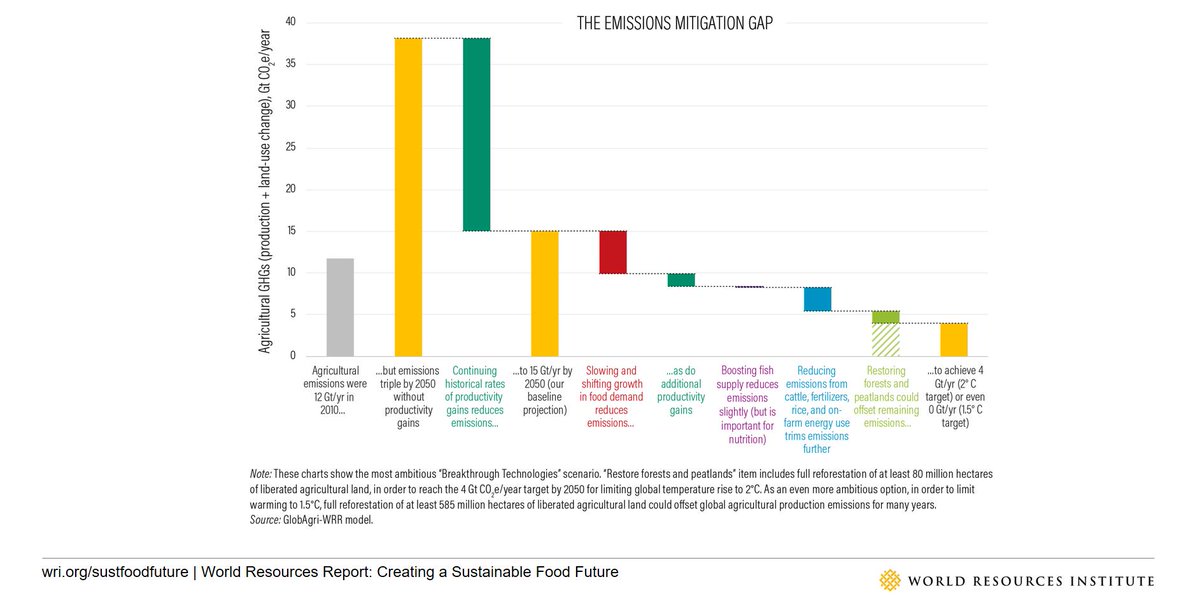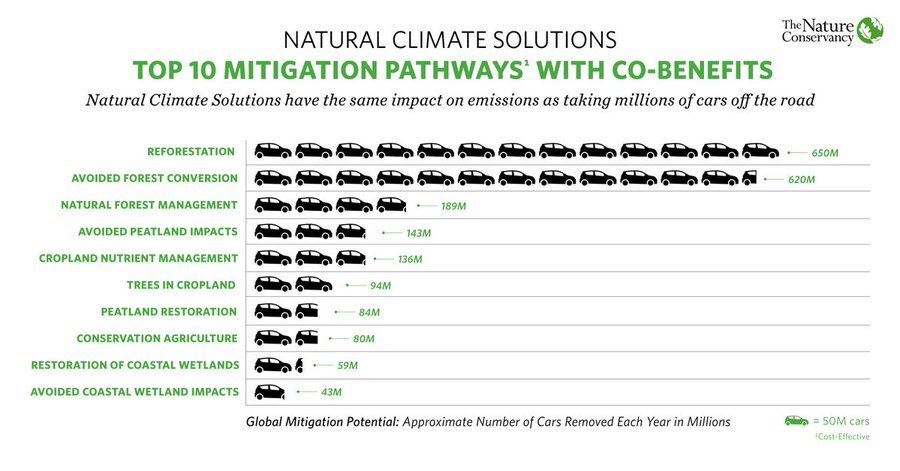It's #ClimateWeek2019, so let's have a THREAD about carbon opportunity costs, since we can't keep warming below 2°C (let alone 1.5°) without halting deforestation - and probably reforesting large areas. How we produce and consume food has a large bearing on what's possible. 1/
In recent years, agriculture and associated land-use change have been responsible for roughly a quarter of total annual GHG emissions from all sectors. The data below are from 2010 (Source: http://www.sustainablefoodfuture.org ). 2/
Those numbers above are from GHG emissions in a recent year. But massive amounts of former forest land have already been cleared for agriculture, which currently occupies nearly half of the world's vegetated lands. And agriculture remains the leading driver of deforestation. 3/
Nearly all of the world’s croplands originally stored more
carbon in their vegetation & soils than they do today,
whether their original ecosystems were forest, savannas, grasslands, etc. And more than 40% of the world’s pasturelands were originally forest or woody savanna. 4/
carbon in their vegetation & soils than they do today,
whether their original ecosystems were forest, savannas, grasslands, etc. And more than 40% of the world’s pasturelands were originally forest or woody savanna. 4/
Source for table above: Searchinger et al. (2018) https://www.nature.com/articles/s41586-018-0757-z. 5/
Deforestation and other land-use changes have contributed between *one-quarter and one-third* of the carbon that humans have released to the atmosphere since 1750. That's...a lot.
Source: IPCC 2019 https://www.ipcc.ch/report/srccl/ 6/
Source: IPCC 2019 https://www.ipcc.ch/report/srccl/ 6/
There's an opportunity cost to continuing to use land for agriculture that used to store more carbon as a forest/savanna/etc. A "carbon opportunity cost," if you will. 7/
And in our world, where agriculture continues to expand into natural ecosystems, production of *every food type* in *every country* in *every year*—even if the food was not produced on land recently converted to agriculture—has some carbon opportunity cost. 8/
Life cycle assessments often estimate GHGs from agricultural production ("PEM" in table below), & some include land use too. But most do not fully translate agricultural land use into carbon opportunity costs. @TSearchinger et al. (2018) estimated them ("COC") in table below. 9/
In the table, the carbon opportunity cost of a food is calculated by estimating total global carbon losses caused by producing that food to date, divided by global annual production of that food, and the result is expressed in kg of CO2e per kg of food. 10/
You can think about these numbers as the climate consequences, at the margin, if the world demand for each food type increased by 1kg. Not only would there be more on-farm emissions (fertilizers, cow burps...) but more land would need to be cleared for agriculture. 11/
You can also think about these numbers as the climate consequences, at the margin, if the world demand for each for each food type *decreased* by 1kg, too. There would be less on-farm emissions, yes. But also more forest could remain standing instead of being cleared. 12/
Some argue beef isn't a climate issue bc its production only accounts for ~3% of US emissions. But put your "carbon opportunity cost" glasses on & imagine US beef demand doubles. Production emissions would go up to 6% of emissions. But where would that add'l beef be produced? 13/
Here is US land use since 1949. Not much change in crop or pasture area. If everyone else outside of the US wants to eat their beef too, & US demand were to go way up...likely effect would be to expand beef production somewhere else, leading to more deforestation GHGs. 14/
But including carbon opportunity costs isn't about making certain foods look "bad." It's just a more complete accounting of the climate consequences of food production and consumption. 15/
On the production side, including carbon opportunity costs also shows that boosting yields of crops or meat/milk per hectare is an underappreciated GHG mitigation strategy. Yes, more intensive farming may use more fertilizer...but it can also avoid deforestation! 16/
The hatched bars here represent avoided emissions from land-use change. Solid bars are avoided emissions from ag production. Strategies that reduce ag land demand (boosting yields, reducing food waste, shifting diets) can avoid deforestation & open up space for reforestation. 17/
Zooming out further, you can also imagine a world where we feed 10B people in 2050, but with no improvements at all in ag productivity or changes in diets, food waste rates, etc. Doing so would require clearing 3 billion hectares of forests - i.e. most of what remains! 18/
In sum: if we want to achieve the Paris Agreement, while also feeding a growing world population, the world will need to change food production and food consumption patterns. This will reduce agricultural production emissions AND avoid deforestation/allow for reforestation. 19/
So it's not enough to just look at ag production emissions if you're analyzing GHG mitigation potential in food/ag. Including carbon opportunity costs shows the true potential of agricultural productivity gains, dietary changes, and waste reductions. We need to do it all. 20/20
A bit more on carbon opportunity costs. You may have seen this great graphic from @nature_org about the potential for #NaturalClimateSolutions to mitigate climate change - that they can deliver ~1/3 of needed GHG reductions (Source Griscom et al. 2017: https://www.pnas.org/content/114/44/11645)
And we need to avoid deforestation & reforest vast areas to hold warming below 1.5°. But global food demand continues to grow. Embedded in those enormous estimates of mitigation potential from forests are also large assumptions about pasture intensification & dietary shifts. 22/
It is important to estimate the huge GHG reductions from keeping forests standing and putting some back where they used to be. But it's equally important to understand that reducing agricultural land demand *is a necessary precondition* for opening up space for those trees. 23/
The carbon opportunity cost approach allocates those GHG reductions to the actions in the ag sector. So boosting yields helps spare land & avoid forest loss/allow for reforestation, & the GHG credit is assigned to the yield gain. Same for shifting diets. See graph #17 above. 24/
Of course you don't want to double-count & assign the same GHG reductions to the ag sector actions AND to forestry. But without including carbon opportunity costs, the climate consequences of land-sparing actions in food/ag are completely hidden. But they're a huge story. 25/25
As I was saying: carbon opportunity costs are important. New paper by @matthewhayek @HHarwatt @muellern estimates potential of large diet shifts to free up land for ecosystem restoration/C storage. Boosting yields & curbing food waste would help a lot too. https://twitter.com/matthewhayek/status/1303316319559966729

 Read on Twitter
Read on Twitter